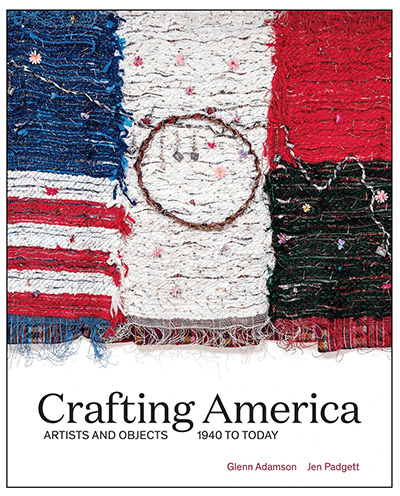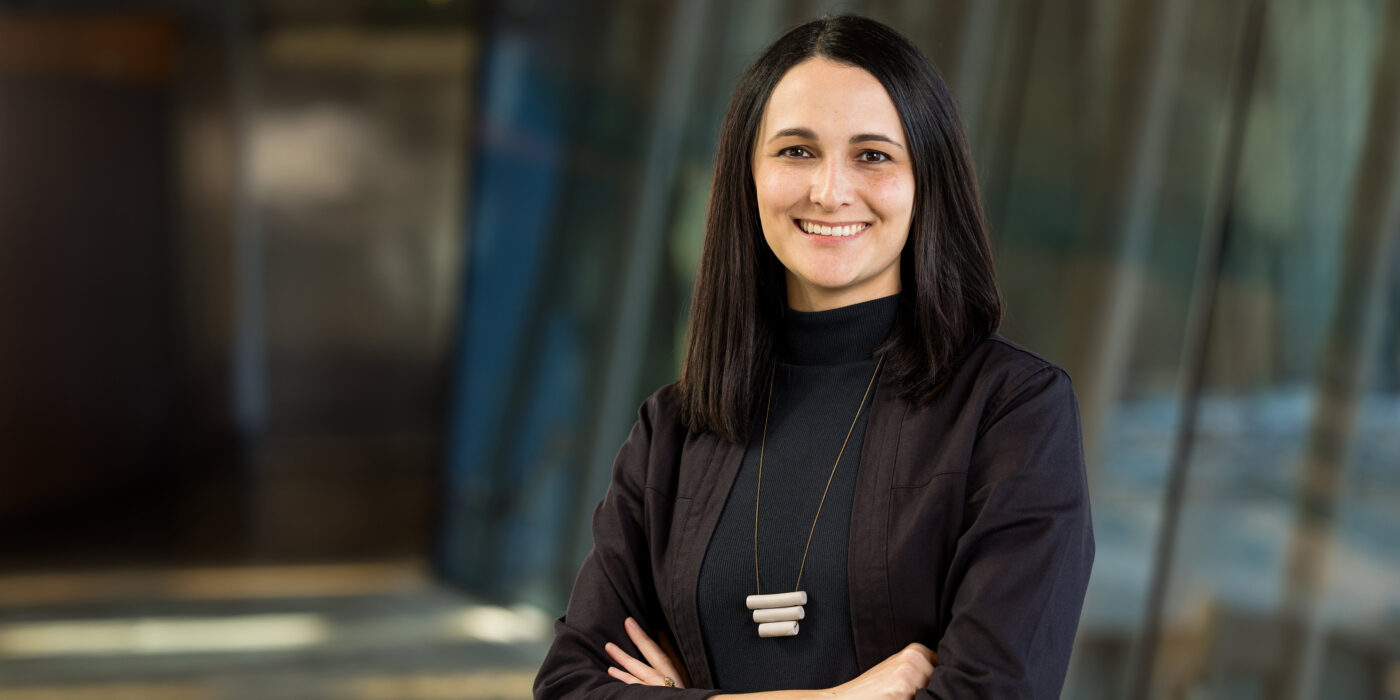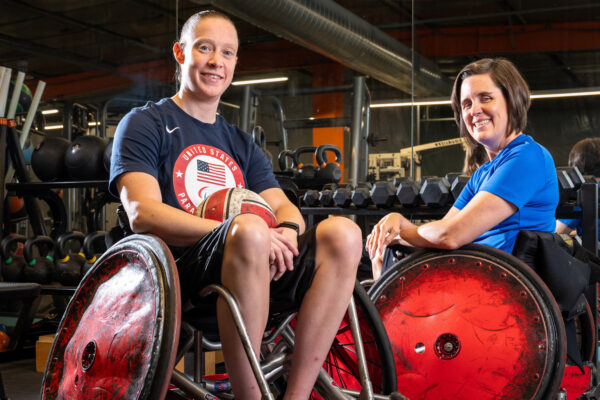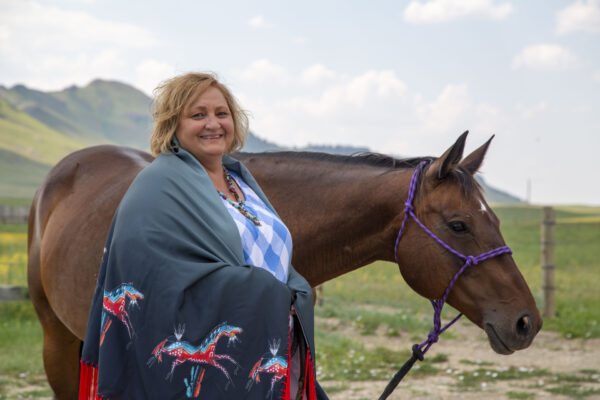In the fall of 2023, Jen Padgett, MA ’12, PhD ’18, was appointed the Wingate Curator of Craft at the world-renowned Crystal Bridges Museum of American Art in Bentonville, Arkansas — the museum’s first endowed curatorial position.
Padgett is an expert in modern art and design in the field of craft, which is defined as artwork created using technical skills and established patterns and designs on, as Padgett says, “a human level.” That puts her in a unique position at one the newest and most distinctive art museums in the world — quite an achievement for a curator whose career just may have been sparked by an old Parker Brothers board game.
It was called Masterpiece, a game in which players could bid on, buy and sell postcards that were reproductions of great works such as Van Gogh’s Self-Portrait, Edward Hopper’s Nighthawks and Georges Seurat’s A Sunday on La Grande Jatte-1884.
“It was a game my mom had as a kid and loved, and she played it with us all the time,” recalls Padgett, who grew up in the Dallas-Fort Worth area. “It was fun, but what I remember most was the artwork reproduced on all those cards. I just never realized until much later that in the version of the game we had, all the artworks were from The Art Institute of Chicago. So in my first visit there as a college student, I remember looking around thinking, ‘I can’t believe all the most famous artworks in the world are in one place!’
“Having that moment, seeing those actual paintings — ones I’d grown up experiencing in just tiny, printed versions — was a revelation,” she says. “And I’ve never forgotten that feeling of having that personal connection to the artwork.”
That emphasis on helping visitors form their own personal connection to art is what drives Padgett at Crystal Bridges.
Founded in 2011 by philanthropist Alice Walton, the museum, nestled in a northwestern Arkansas Ozark forest, seamlessly blends American art, architecture and nature on its 134-acre campus. And in her role as a curator of craft, Padgett gets to dive into an artform that is uniquely American, one that is literally hands-on. The form of craft comprises a variety of media, including wood, glass, metal, fabric and ceramics, among other materials, created by women and men, people of color, immigrants and Indigenous people.
Craft, wrote Padgett in Crafting America, Artists and Objects 1940 to Today, the book that accompanied the 2021 exhibit of the same name co-curated by Padgett and Glenn Adamson, is “a form that provides a crucial contribution to the larger history of American art.

“There is something deeply human about craft,” she says.
Wearing multiple hats
The job of a museum curator involves myriad skills beyond being an expert in any one form — from concept planning to project management, to the installation, the writing of supporting materials and even public engagement once the exhibit is open. Over the course of years, a curator juggles multiple projects. It’s a job that Padgett relishes.
“Wearing multiple hats makes it exciting,” she says, “especially when you get into a rhythm. The beginning of a project is all big ideas, asking questions like ‘What is the purpose of this exhibition?’ or ‘What are the works we might have here and what do we need to include?’
“Having those early conversations is important. And then the process unfolds over months, sometimes years. My job is about finalizing the placement of those works and saying, ‘Yes, this does look good here’ or asking, ‘Is this working in the way we had planned?’ ”
Even the writing a curator does holds different challenges. There’s the exhibit catalog, where, Padgett says, “you go into great depth about the pieces and use more scholarly language.” And there’s writing that must be done for the wall labels and placards that appear near a piece in the museum. At times, Padgett says, she will walk into a gallery as it is being assembled and imagine herself talking to a visitor, thinking about what it is she would say if she could give a personal tour to every one of them.
“I’m imagining this person who’s excited about art but maybe doesn’t know a lot of background — someone who is a little curious but happy to be at Crystal Bridges,” she says. Thinking about that personal connection, she says, helps merge the parts of her job that are separate from being in the galleries, like long-term planning, budgets and project details. “In the galleries, it’s all about the artwork,” Padgett says. “So I ask myself, ‘What is interesting about this particular piece? What is it that I want to tell them?’”
And then the exhibit opens and visitors begin streaming in with questions and insights, bringing their own perspectives. “To see our plans come to fruition is truly wonderful,” she says.
From South Bend to Bentonville, by way of St. Louis
Patchett has been at Crystal Bridges for six years, having been hired initially as an assistant curator in 2019. But by that point, she had amassed an impressive résumé of internships and fellowships from art museums all over the country, beginning with a job in visitor services at the Amon Carter Museum of American Art in Fort Worth, Texas. It was her first job in the art world after she earned a bachelor’s degree from the University of Notre Dame in art history and English.
“The Amon Carter experience was so valuable to me,” she says. “I think anyone who works on the curatorial side in museums benefits from having the experience of interacting with people that come in the door every day. It’s literally your job to say, ‘Welcome! We’re glad you’re here,’ while answering basic questions about bathrooms and food services and gift shops. It gave me perspective on how to create a space where people are welcome.”
“I think anyone who works on the curatorial side in museums benefits from having the experience of interacting with people that come in the door every day. It’s literally your job to say, ‘Welcome! We’re glad you’re here.’ ”
Jen Padgett
It was also at the Amon Carter where she learned to love American art, and began exploring graduate art programs that would help her refine that. For Padgett, that turned out to be WashU.
“WashU has a wonderful graduate program in art history,” she says, citing the depth of the art history faculty, especially Angela Miller, professor of art history and archaeology in Arts & Sciences. Miller would become her adviser, but before Padgett even arrived on campus, she says Miller’s work and scholarship was one of the reasons she came here to study.
“The Kemper Art Museum is also a great place in terms of collections and opportunities for students,” Padgett says. “St. Louis itself has a great museum culture. To have a free art museum like the Saint Louis Art Museum just down the road from the art department is special.”
While working on her graduate degrees, she also took advantage of summer internships at places like the Philadelphia Museum of Art and the Metropolitan Museum of Art in New York City. “I had multiple experiences to engage in the art world from different angles that helped pave my path to a career,” she says.
But for now, Bentonville, where she first arrived in 2016 through a residential fellowship program, holds her heart. “My first experience at Crystal Bridges was as a Tyson Scholar of American Art,” she says. “For a whole semester, all I did was focus on my thesis backed up by the resources of this amazing institution — things like office space, the library collection, the artwork. It was like this writer’s retreat in the woods.”
What’s next
Padgett’s next big project is helping Crystal Bridges work on a major expansion that will be complete by the summer of 2026, a 100,000-square-feet extension designed by the museum’s original architect, Moshe Safdie, that will add about 50% to the museum’s footprint. It’s an opportunity, she says, to tell more and diverse stories of American art through craft.
“We’ve been acquiring a lot of work within the realm of craft, so we’re working on best ways to include those in the stories we’re already telling in other gallery spaces,” she says. “We want to tell new stories in innovative ways that connect with people.”
There’s that “connection” word again, a concept that remains front and center for Padgett. “A museum is a place for people to merge their personal experiences with all these stories about, say, American history or American art innovation or artistic exploration,” she says. “But you can have that personal experience and a communal experience, too.
“Those moments when people come in, have questions and insights, and then share their own perspectives is really exciting!”



